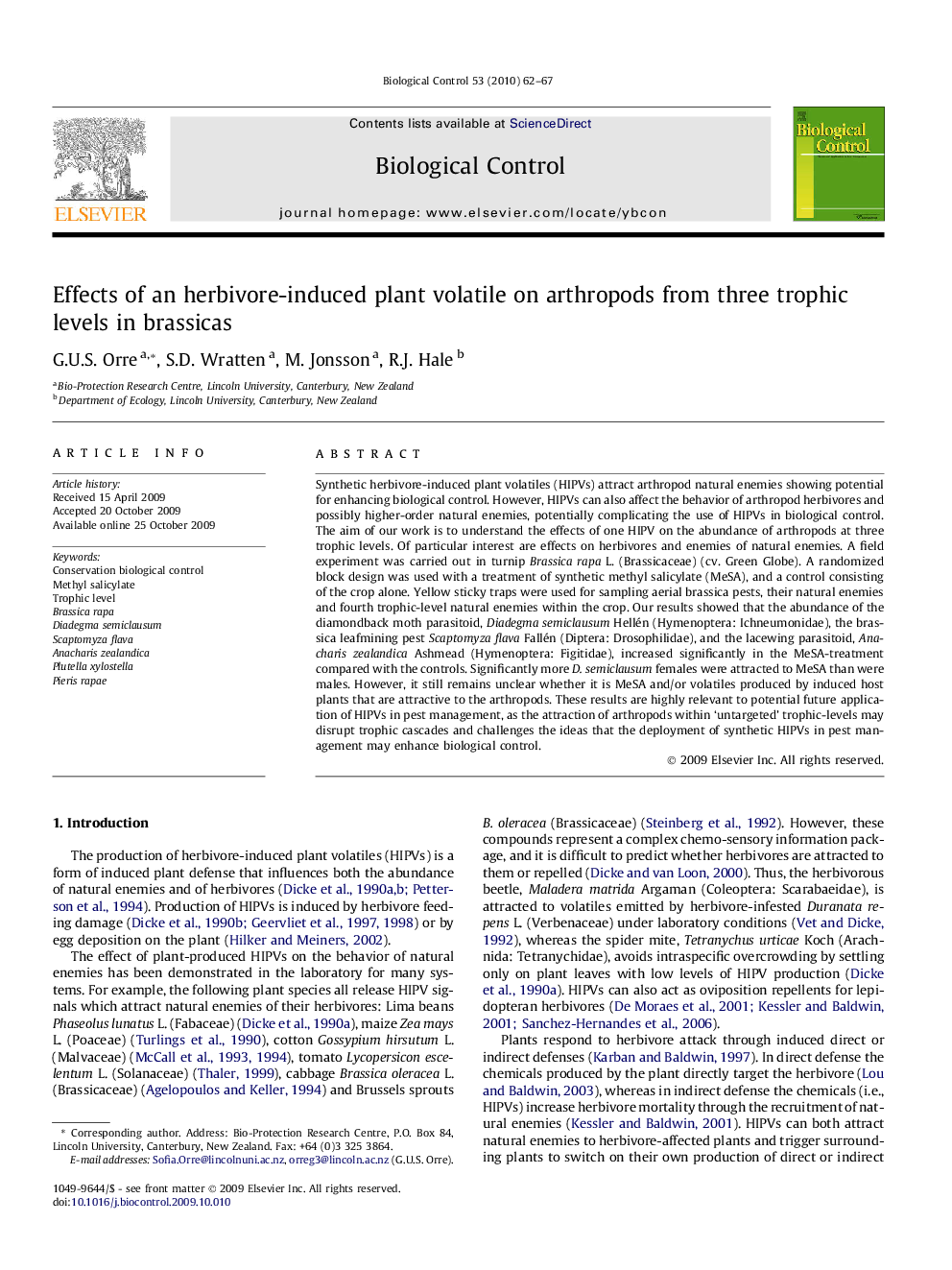| Article ID | Journal | Published Year | Pages | File Type |
|---|---|---|---|---|
| 4504568 | Biological Control | 2010 | 6 Pages |
Synthetic herbivore-induced plant volatiles (HIPVs) attract arthropod natural enemies showing potential for enhancing biological control. However, HIPVs can also affect the behavior of arthropod herbivores and possibly higher-order natural enemies, potentially complicating the use of HIPVs in biological control. The aim of our work is to understand the effects of one HIPV on the abundance of arthropods at three trophic levels. Of particular interest are effects on herbivores and enemies of natural enemies. A field experiment was carried out in turnip Brassica rapa L. (Brassicaceae) (cv. Green Globe). A randomized block design was used with a treatment of synthetic methyl salicylate (MeSA), and a control consisting of the crop alone. Yellow sticky traps were used for sampling aerial brassica pests, their natural enemies and fourth trophic-level natural enemies within the crop. Our results showed that the abundance of the diamondback moth parasitoid, Diadegma semiclausum Hellén (Hymenoptera: Ichneumonidae), the brassica leafmining pest Scaptomyza flava Fallén (Diptera: Drosophilidae), and the lacewing parasitoid, Anacharis zealandica Ashmead (Hymenoptera: Figitidae), increased significantly in the MeSA-treatment compared with the controls. Significantly more D. semiclausum females were attracted to MeSA than were males. However, it still remains unclear whether it is MeSA and/or volatiles produced by induced host plants that are attractive to the arthropods. These results are highly relevant to potential future application of HIPVs in pest management, as the attraction of arthropods within ‘untargeted’ trophic-levels may disrupt trophic cascades and challenges the ideas that the deployment of synthetic HIPVs in pest management may enhance biological control.
